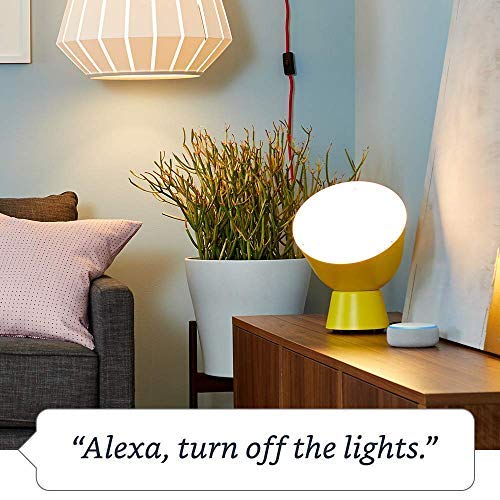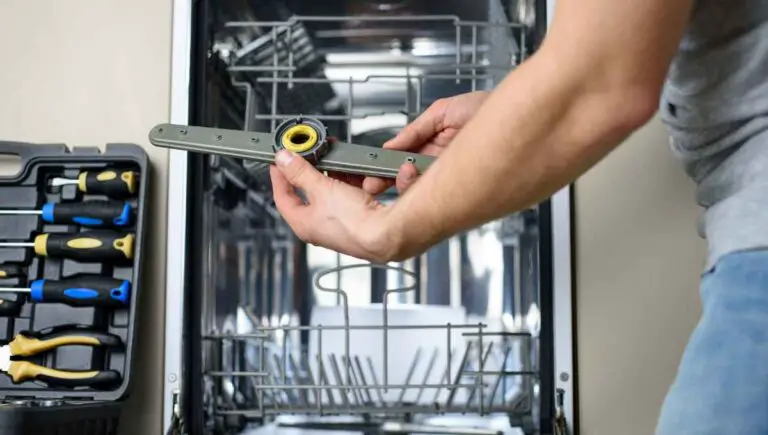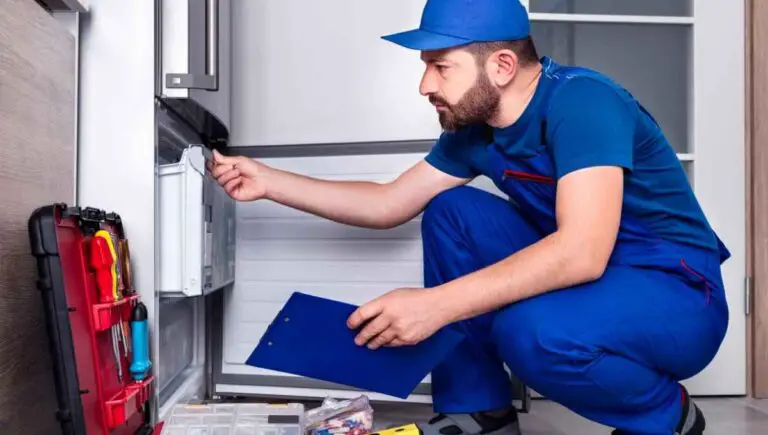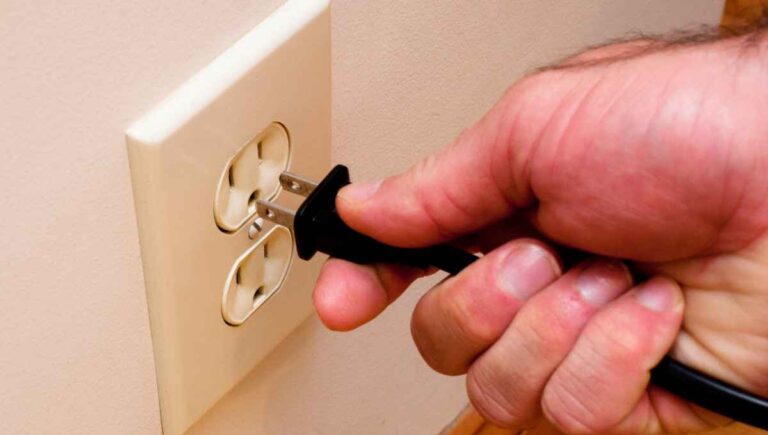Do Walk-in Closets Need Outlets? (We Checked the Laws)

Walk-in closets can be considered a luxury to have, but with most luxuries, more building codes apply. A common concern for walk-in closets is whether or not they need to have outlets. So, what are the laws regarding this? Do walk-in closets need outlets?
Closets and walk-in closets are not legally required to have outlets installed. Additionally, there are no building codes that prevent you from installing outlets in your closets either. However, if the closet outlet is located in a damp space, it does need to be GFCI-protected.
Trying to figure out what kind of outlet you need, how to install it, and how much it will cost can be overwhelming. Let us take you through the steps and share some tips with you in this article, as well as some vital information if you are doing this yourself.
This post contains affiliate links. This means Household Blogger may earn a commission should you make a purchase using any of our links. Please refer to our full affiliate disclosure policy for full details.
Here’s a Quick Pro Tip!
You don’t have to have an outlet in your closet, but if you want one to charge devices while hiding them in the closet, you will need some tools and materials to install one efficiently.
Here is a list of a few of the best tools and outlets on Amazon:
1. Leviton GFCI Non-Tamper-Resistant Receptacle: A GFCI outlet interrupts the circuit when ground faults protect the outlet and prevent electrical fires.
2. Tavool Stud Finder: This stud finder has precise accuracy, warns you where live wires are, and has five scanning modes for different depths. It also has an easy-to-read LCD display, and it creates warning sounds.
3. ILintek Smart Outlet: This smart outlet is voice-activated and connects to Google and Alexa. Also, you can control it with your phone through an app. More so, it has a tamper-resistant design for your safety.
Is it Okay to Have an Outlet in a Closet?
Having an outlet in a closet is not against code. Contractors simply do not place outlets in closets because before, there was little reason to have an outlet in the closet.
In this section, we look at why you want to put an outlet in a closet,
Do You Need an Outlet in a Walk-in Closet?
Having an outlet in a closet is not against code, but it’s also unnecessary. A closet, even a walk-in closet, is a space meant for storage and not plugging in something. However, some new homes will have an outlet in the closet to hide rechargeable devices.
Other devices you might want to set up in the closet are Alexa, robot vacuums, and smart plugs. These devices can stay plugged in at all times before, during, and after use.
Additionally, you won’t need to build a fancy cabinet to hide your devices.
Can You Put an Outlet in a Walk-in Closet?
You can put an outlet in a walk-in closet. There are no codes against having a plug outlet in a closet. Some question this because they are not commonly found in closet builds, mainly because it is not required by any standards.
The IRC codes state a need for outlets in the kitchen, family room, dining room, living room, parlor, library, den, sunroom, bedroom, recreation room, or any space people inhabit.
However, it does not state a closet because its purpose is for storage.
Can You Have an Electrical Outlet in a Walk-in Closet?
You can have an electrical outlet in a walk-in closet. There are a few reasons why you might want an outlet in a closet. One is to plug in rechargeable devices whose cords can become an eyesore in the hall or common areas.
Another reason for installing an electrical outlet in the closet is to hide large rechargeable devices, like robot vacuum cleaners.
Additionally, anything that uses a smart plug can go into the closet, and you can turn it off with your Alexa device.
Requirements for Outlets in Closets
The requirements for outlets in the closet are simple: There are none. However, if you plan to install one in a closet, you need to know some things.
In this section, we look at which outlets are best for the closet and the best uses for closet outlets.
What is the Code Requirement for Outlets in the Closet?
The National Electrical Code does not have any specifications for electrical outlets in closets. This is because closets are considered storage, and electrical outlets are stated to be needed in inhabited areas.
Today, newer houses and apartments have electrical outlets in them because they are convenient places to store charging stations for wireless devices.
Additionally, closets are an excellent place to store robot vacuums, steamers for clothes, and smart devices.
Are Outlets Allowed in Walk-in Closets?
Outlets are allowed in walk-in closets. Many new apartments and house builds have outlets in closets. However, if the closet is located in a bathroom or other damp areas, it will need a GFCI to protect the outlet from moisture.
Even if an outlet is in a closet far from a water source, it still needs a GFCI if it’s in a bathroom. This is because the moisture from the hot water will steam up and create a very humid environment.
The GFCI will interrupt the electrical current when it detects dangerous ground faults.
Does There Have to be an Outlet in the Walk-in Closet?
There does not have to be an outlet in a walk-in closet. A closet of any kind is considered storage; therefore, an outlet is unnecessary. However, some people want to put outlets in their closets because they conveniently store rechargeable devices.
If you are considering installing an outlet in a closet in a damp space like a bathroom, laundry room, basement, or crawlspace, be sure to use a GFCI outlet.
A GFCI outlet will interrupt the circuit in the outlet so that it won’t trip the breaker due to ground faults.
You might also enjoy our post on If Bathroom Lights Need to be GFCI Protected
Do Walk-in Closets Require an Outlet?
Walk-in closets do not require an outlet regardless of size. Even closets that are the size of a bedroom do not need an outlet. As long as the purpose of the space is for storage, you do not need an outlet.
If you want an outlet and you don’t already have one, they can be easy to install within the wall. You can use the power cords from another nearby outlet or light fixture.
You will need to find a space between studs in the wall, which you can do with a stud finder.
Can I Have a Walk-in Closet Without Outlets?
You can have a walk-in closet without outlets. No building codes state you must have an outlet in a closet. However, new apartments and houses often have outlets in closets for charging wireless devices.
If you are putting an outlet in a closet that is located in a bathroom, basement, laundry room, or crawlspace, be sure you are using a GFCI outlet.
You must have this kind of outlet to interrupt the circuit in case of ground faults.
Does a Closet Outlet Need to be GFCI?
If you want to put an outlet in a closet inside a bathroom, it must be GFCI. A GFCI protects outlets from moisture in bathrooms. If the closet is not in a bathroom and is away from moisture, then a GFCI is not necessary.
The National Electrical Code does not have any other regulations for outlets in the closet. So, you are free to have an outlet or not have an outlet.
An outlet in a closet can be helpful when stowing away wireless devices while charging.
How Much Does Installing a Closet Outlet Cost?
The cost of installing an outlet in a closet will depend on how your home’s electrical system is already set up.
Sometimes, putting in an outlet is simple and costs less than $200, but it can also cost thousands. In this section, we will cover what influences the cost of installing an outlet.
How Much Does it Cost to Install an Outlet in a Walk-in Closet?
If you can find a nearby outlet to pull the electrical from, then you can save on the wiring from having to route farther away from an outlet or electrical panel. Each foot you have to run wiring costs $27.
Also, the type of outlet you want will change the price drastically. A standard 120v outlet can cost as little as $3.
However, if you buy a smart plug, a higher volt plug, or a three-prong plug, the cost will be higher, but you shouldn’t have to pay more than $300 for a plug.
How Much Does it Cost to Add an Outlet to a Closet?
For the outlet, it can cost $10 to $50. Standard 120 outlets are the cheapest, and smart outlets cost the most. The cost of an installment is on average $300. If the electrician can’t find a nearby outlet already installed, the cost will be greater.
For each foot, an electrician has to route the wiring to hook up the new outlet to cost $27.
Additionally, If you put an outlet into a bathroom, laundry room, or basement, you will need a GFCI outlet, and they cost between $7 and $25.
How Much Does it Cost to Add Electric Outlets?
It costs about $20 per outlet, not including labor or extra wiring needed. For every foot of wiring, it costs $27. For labor, it will cost $300 per outlet on average. Also, the cost depends on the type of outlets you want to be installed. The most expensive are the smart outlets.
To figure out how much your job will be approximately, first figure out what you plan to use each outlet for and what kind of voltage it needs.
Then figure out how far the outlets will be from the closest installed outlet or light fixture.
How Much Does it Cost to Add a 220 Outlet?
The average cost to install a 220 outlet is $300. However, it can cost more than $1000. If you can do it yourself and can feed power from a nearby outlet or light source, it can cost around $20 instead.
Also, be sure to consider how many other outlets are on your breaker. You can have many outlets on a breaker, but if there are too many, you will not be able to use them all simultaneously.
How Much Does it Cost to Add a 110 Outlet?
The cost of a 110 outlet can be between $7 to $25 for the outlet, and then installation costs an average of $300. This varies based on how far the electrical wiring needs to be routed. If you are replacing an outlet, the cost will be more like $125 for an electrician.
Sometimes, the amp circuit you have cannot handle another outlet, and you will need to install a new circuit and electrical box, etc. The electrical work will be more extensive as well.
Keep in mind that you can hook up more outlets to a circuit that is more than the circuit can handle, but if you don’t run each outlet simultaneously, the circuit won’t break.
How Do You Install an Outlet?
You might be looking at all those devices that need to be charged every night on the floor. Most of the time, the chargers are out in the open and are eyesores.
So, in this section, we will tell you how you install an outlet in the closet to hide all your chargers, robot vacuums, and Alexas.
How Do You Install an Outlet in a Walk-in Closet?
The best way to add an outlet in a walk-in closet is to connect new wiring to existing wiring in a nearby outlet. To do this, remove the receptacle from the existing outlet, strip the three wire types, and connect the new wire using a wire connector.
To add the new outlet, cut a hole in the drywall using the new receptacle box as a guide, and pull the new wire through the new box from the other outlet.
Connect the wire to the receptacle with needle nose pliers. And lastly, screw in the receptacle cover.
Safety note: Do not forget to turn off the electricity before beginning!
How Do You Install a Walk-in Closet Plug?
To install a plug in a walk-in closet, you must turn off the electricity first. Then, locate the nearest plug or light receptacle. You can connect new wires to existing wiring in the existing outlet by stripping the ends of both new and old wires.
You will see three different wires, hot (black), neutral (white), and ground (copper). You will need to match the new wires up with the existing wire.
You will need a wire stripper, a stud finder, a screwdriver, and the new outlet and cover.
How Do I Install an Outlet Without Opening a Wall?
You can install an outlet without opening the wall if there is an existing receptacle. You can use an old phone line outlet or replace a plug. You can also minimize the opening to only the size of the new receptacle if there is an outlet on the opposite side of the wall.
To do either, turn off the electricity and check to see if it’s off.
Then you remove the receptacle from the existing outlet and either replace the outlet or connect a new wire to the existing wire and run the connected wires to the new outlet.
How Do I Add an Electrical Outlet to an Existing Wall?
You can add an electrical outlet to an existing wall by first turning off the electricity. Then you can find a spot to put the new outlet. It must be between two studs and on the opposite side of the wall to an existing outlet.
The tools you will need include a stud finder, wire stripper, needlepoint pliers, drywall cutter, and a screwdriver.
The materials you will need for the new outlet are the plug receptacle, the outlet box, the new wire, and the receptacle cover.
Related Questions
Where are 20 amp Outlets Required?
You can put a 20 amp outlet in any room except the bathroom. However, the best places to have them are the kitchen, living room, and dining room. They are helpful in areas that need bright light fixtures and high-powered appliances.
You will not likely find a 20 amp outlet in a bedroom or closet, but you can put one in those spaces. You don’t want to have one in an area that becomes humid often.
If you ever use a 20 amp outlet in a damp room, be sure it is a GFCI outlet.
Why Is There an Outlet in My Closet?
There is an outlet in your closet for devices you want to store away while they charge. A closet is also an excellent place to put robot vacuums and smart devices. Some also use an outlet in the closet for a clothes steamer.
If you use a clothes steamer, ensure the outlet you are using is a GFCI. This will help protect ground faults in the outlet. Ground faults are often caused by moisture.
Moisture can come from a steamer; if the closet is located in a bathroom, the moisture comes from the shower or sink.
Final Thoughts
We hope this article helps you and that you can either enjoy a new outlet in your closet soon or that your mind is at ease knowing that an outlet in a closet is unnecessary.
However, if you do decide to install an outlet, be safe and turn off the electricity first. Additionally, when in doubt – call an electrician.












